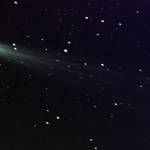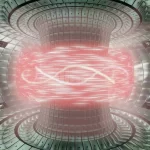Key Takeaways:
- The Hubble Space Telescope unexpectedly discovered a small, isolated dwarf galaxy named Bedin 1, just 30 million light-years away from the Milky Way.
- Luigi Bedin and colleagues were initially studying the globular star cluster NGC 6752 when they noticed Bedin 1 hidden behind the brighter stars of the cluster.
- Bedin 1 stands out due to its unique isolation, challenging the typical association of dwarf galaxies with larger galactic structures.
- Unlike most dwarf galaxies, Bedin 1 displays minimal signs of past interactions with neighboring galaxies, making it a fascinating subject for astronomers.
- The discovery suggests the possibility of more hermit-like galaxies, and future surveys, such as the Wide Field Infrared Survey Telescope (WFIRST), may unveil additional instances.
In an unexpected turn of events, the Hubble Space Telescope has stumbled upon an intriguing astronomical find—Bedin 1, a small and peculiarly isolated dwarf galaxy residing just 30 million light-years away from our own Milky Way. What makes this discovery particularly fascinating is the accidental nature of its revelation during the study of the globular star cluster NGC 6752 by Luigi Bedin and his colleagues from the Astronomical Observatory of Padua.

Globular star clusters are dense gatherings of ancient stars, and it was within the images sent back by Hubble while scrutinizing NGC 6752 that the astronomers discerned the presence of Bedin 1, discreetly positioned behind the cluster’s more luminous stars. This dwarf galaxy, distinguished by the moniker Bedin 1, captivates scientists due to its distinctive isolation. Unlike the majority of dwarf galaxies typically found in proximity to larger galactic structures, Bedin 1 appears unassociated with any significant neighboring galaxy.
Astronomers ponder the intriguing possibility that Bedin 1 might be gravitationally linked to a more distant galaxy, NGC 6744. However, the considerable distance between the two and the absence of clear signs of past interactions add an air of mystery to their relationship. This sets Bedin 1 apart, as most dwarf galaxies exhibit evidence of gravitational influence or interactions with larger galactic counterparts.
One noteworthy aspect of Bedin 1 is its quiet and undisturbed existence. Typically, dwarf galaxies are subject to gravitational forces from larger galaxies, leading to intricate histories of star formation. Bedin 1, however, defies this trend; all measured stars within the dwarf galaxy are small and old, suggesting a single burst of star formation approximately 10 billion years ago. Since then, Bedin 1 has remained tranquil, allowing its massive stars to burn out naturally without initiating the creation of new stars.
The question of whether Bedin 1 is gravitationally linked to NGC 6744 raises the possibility that the larger galaxy has left its smaller counterpart undisturbed. This unexpected scenario challenges conventional assumptions about the gravitational relationships between dwarf galaxies and larger cosmic structures.
Looking ahead, astronomers anticipate that future surveys, such as the Wide Field Infrared Survey Telescope (WFIRST), may reveal more of these small, hermit-like galaxies. Bedin 1’s accidental discovery opens a new chapter in our understanding of the cosmos, urging astronomers to reconsider the prevalent narratives of galactic interactions and the formation of dwarf galaxies.


